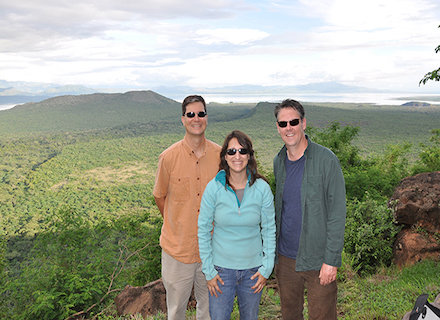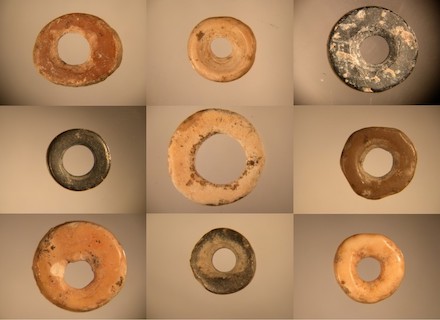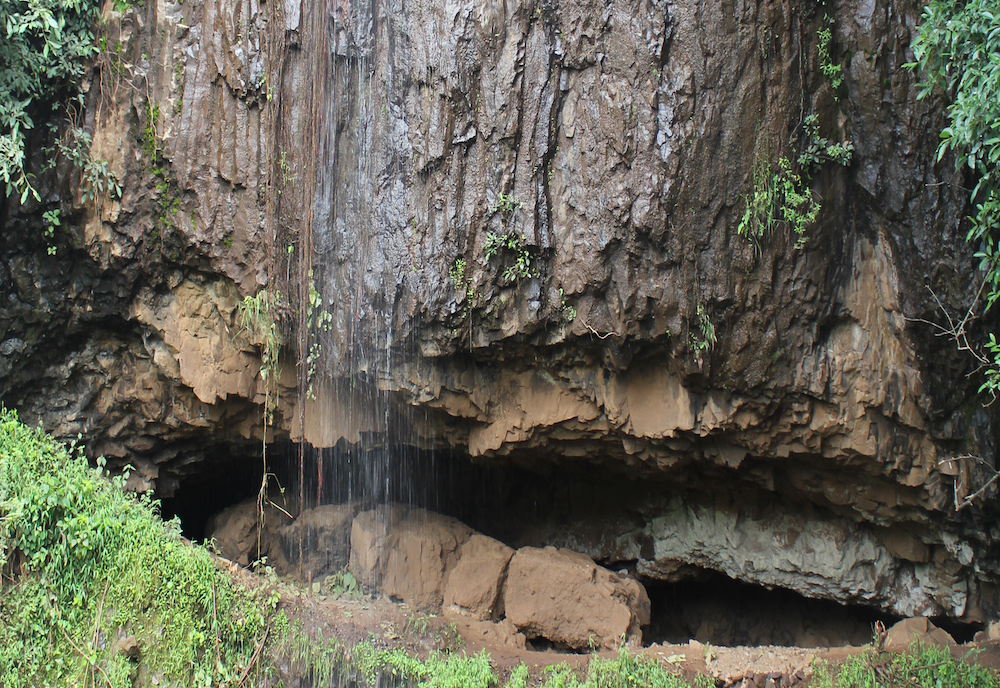DNA from a 4,500-year-old skeleton discovered by USF professors has contributed to a new continent-wide analysis of human remains buried in African archaeological sites, revealing a fascinating story of how early humans lived, traveled and even found their significant others.
An interdisciplinary team of 44 researchers, including USF St. Petersburg campus Anthropology Professors Kathy and John Arthur, released findings of their far-reaching analysis in a paper published today in Nature.
Thanks to groundbreaking DNA data from ancient individuals uncovered in recent years, researchers were able to outline major demographic shifts that took place from about 80,000 to 20,000 years ago. As far back as about 50,000 years ago, people from different regions of the continent moved and settled in other areas and developed alliances and networks over longer distances to trade, share information and even find reproductive partners. This social network helped them survive and thrive, the researchers wrote.
“This pioneering research presents a new perspective on the ancient history of sub-Saharan Africa, allowing us to gain a more complete understanding of human interaction during this time,” the Arthurs said in a written statement.
The article, "Ancient DNA reveals deep population in sub-Saharan African foragers” examines DNA from six individuals buried in Malawi, Tanzania and Zambia who lived between 18,000 and 5,000 years ago. The study also reanalyzed published data from 28 individuals buried at sites across the continent, generating new and improved data for 15 of them.

One of the individuals analyzed was an ancient skeleton unearthed in the Mota Cave in the highlands of southern Ethiopia in 2012 by the Arthurs and their colleagues. They named him Bayira, which means “first born” in the Gamo language of the people who inhabit the area today.
All told, the result of the analysis is an unprecedented dataset of DNA from ancient African foragers — people who hunted, gathered or fished.
“This more than doubles the antiquity of reported ancient DNA data from sub-Saharan Africa,” said David Reich, a professor at Harvard University and investigator at the Howard Hughes Medical Institute whose lab generated the data in the paper. “The study is particularly exciting as a truly equal collaboration of archaeologists and geneticists.”
Researchers have long assumed that major changes in the archaeological record about 50,000 years ago reflected a shift in social networks and maybe even changes in population size. However, such hypotheses have remained difficult to test.
"We've never been able to directly explore these proposed demographic shifts, until now," said Elizabeth Sawchuk, an author of the study who is a Banting Postdoctoral Fellow at the University of Alberta and research assistant professor at Stony Brook University. “It has been difficult to reconstruct events in our deeper past using the DNA of people living today, and artifacts like stone tools and beads can’t tell us the whole story. Ancient DNA provides direct insight into the people themselves, which was the missing part of the puzzle.”
The researchers were also able to demonstrate a shift that took place by approximately 20,000 years ago, when people had stopped moving around so much.
"Maybe it was because at that point, previously established social networks allowed for the flow of information and technologies without people having to move," Sawchuk said.

“These findings reinforce earlier studies of Bayira that suggest he and his ancestors likely lived in southern Ethiopia for an extended period of time, importantly allowing them to genetically adapt to a high-altitude environment,” the Arthurs added.
This is not the first major discovery associated with Bayira’s remains. A DNA analysis of the skeleton’s ear bone published in Science provided researchers with the first ancient human genome completely sequenced from the African continent in 2015, making international headlines. The DNA contained three genetic variants, which indicated he was adaptive and capable of living in low-oxygen, high-altitude conditions.
In a 2021 paper in the Proceedings of the National Academy of Sciences, fossilized plaque scraped from the teeth of the skeleton helped unlock secrets of what ancient humans ate and how our species evolved. The groundbreaking study revealed that starchy foods were part of the human diet millions of years earlier than previously thought, which could have played a significant part in how ancient humans’ brains evolved.
The interdisciplinary research team that analyzed African-wide ancient DNA included scholars from Canada, Kenya, Malawi, Tanzania, the United States, Zambia and many other countries. Critical contributions to the study came from curators and co-authors at African museums who are responsible for protecting and preserving the remains.
“Bayira’s vanguard discovery has led researchers to realize that ancient DNA could be extracted and decoded from African sites,” the Arthurs said. “His story not only continues to reshape African history but also the history of our species.”
For more information about this groundbreaking research, visit: https://news.rice.edu/news/2022/ancient-dna-reveals-surprises-about-how-early-africans-lived-traveled-and-interacted
